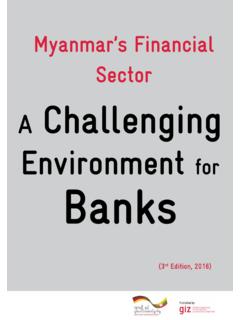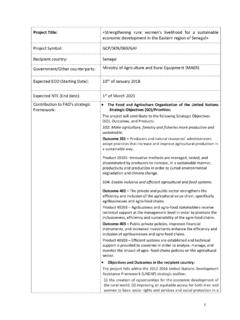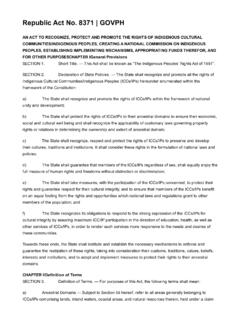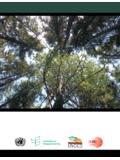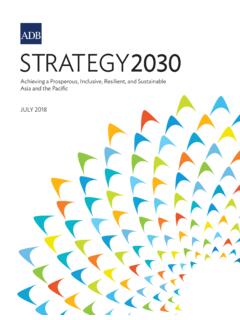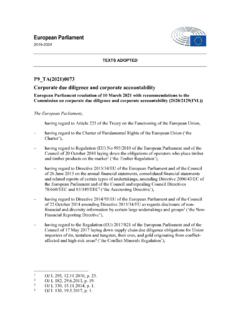Transcription of What is sustainable agriculture?
1 What is sustainable agriculture? BMZ .. German Federal Ministry for Economic Cooperation and Development FAO .. Food and Agriculture Organization of the United Nations GAP .. Good Agricultural Practices GIZ .. Deutsche Gesellschaft f r Internationale Zusammenarbeit (GIZ) GmbH. HAFL .. Hochschule f r Agrar-, Forst- und Lebensmittelwissenschaften .. (School of Agricultural, Forest and Food Sciences), Bern University of Applied Sciences RISE .. Response-Inducing Sustainability Evaluation | 3. Contents The challenge food for all .. 4. The solution sustainable agriculture .. 6.
2 sustainable agriculture .. 7. Definitions .. 8. There are many aspects to sustainable agriculture .. 10. RISE making sustainability measurable .. 11. Soil management possible without ploughing? .. 12. Livestock farming has many facets .. 12. Organic farming can it feed the world? .. 13. Mineral fertilisers a blessing or a curse? .. 13. Genetically modified seed .. 14. Seed from commercial or farm-based production? .. 15. Agricultural biodiversity can it save us? .. 16. Smallholders better farmers? .. 16. Agricultural technology mechanization for everyone? .. 17. Crop protection with or without chemicals?
3 18. Gender equality what is its role in sustainable agriculture? .. 20. The framework how can we promote sustainable agriculture? .. 21. Climate change how much is attributable to agriculture? .. 21. Water how much does agriculture need? .. 22. Agripreneurs', the farmers of the future .. 22. Knowledge strengthening the agricultural innovation system .. 23. Food security at risk from biofuels and steak dinners? .. 24. Is food loss inevitable? .. 25. Conclusion .. 26. Sample projects .. 28. Bolivia .. 28. East Timor .. 29. Burkina Faso and Niger .. 30. Ethiopia .. 31. 4 |.
4 The challenge . food for all | 5. The world's population is likely to reach 9 billion by In many places, soil has already suffered lasting the middle of this century. The Food and Agriculture damage while water resources are often overused Organization of the United Nations (FAO) believes or polluted by fertilisers and pesticides. Agricultural that 60 per cent more food will be needed by 2050 biodiversity has dwindled as farming has become to sustain all these people. Where possible, this food industrialised. These negative effects have height- should be produced where it is needed in develop- ened global awareness of the fact that agriculture ing countries.
5 These countries will have to increase does more than simply produce food, animal feed their production substantially to reach this goal, and and energy. It also has impacts on the climate, this will have implications for the limited natural human health, and global ecosystems. resources on which farming depends, particularly water for irrigation and livestock farming, land for growing crops and grazing, and limited nutrients, such as phosphate. Diversity safeguards the future. A diverse market in Cameroon. 6 |. The solution . sustainable agriculture | 7. Against this backdrop, how can we shape future yy Ensures that the basic nutritional requirements agricultural production so that we guarantee food of current and future generations are met in security for the world's population without destroy- both quantity and quality terms.
6 Ing the resource base? The answer is that we need yy Provides long-term employment, an adequate productive yet sustainable agriculture that con- income and dignified and equal working and serves resources. Growth cannot be at the cost of living conditions for everybody involved in natural resources and must be made as independent agricultural value chains. as possible of consumption of resources. yy Reduces the agricultural sector's vulnerability to adverse natural conditions ( climate), socio- economic factors ( strong price fluctuations). and other risks. sustainable yy Fosters sustainable rural institutions that Agriculture encourage the participation of all shareholders and promote the reconciliation of interests.
7 Yy Puts the emphasis on methods and processes Conventional or organic agriculture? Industrial or that improve soil productivity while minimising small-scale production? harmful effects on the climate, soil, water, air, biodiversity and human health. The debate about sustainable agriculture typi- yy Aims to minimise the use of inputs from non- cally ranges between these alternatives. However, renewable sources and petroleum-based prod- the issue is rather more complex, as sustainability ucts and replace them with those from renew- hinges on many factors. The following sections will able resources.
8 Explore in greater detail the key points of the debate yy Focuses on local people and their needs, know- surrounding sustainable farming. ledge, skills, socio-cultural values and institu- tional structures. Maize is an important crop in Bolivia 8 |. Definitions | 9. Organic Agroecology Farming is defined by Martin and Sauerborn in their 2013. book of the same name as the science of the rela- does not use synthetic pesticides and mineral fer- tionships of organisms in an environment pur- tilisers but attempts to work with natural methods posely transformed by man for crop or livestock and cycles.
9 A number of associations and certifica- production. tion systems exist, but farmers can of course pro- duce in an organic way without certification. Climate smart agriculture Conventional Farming is defined by the FAO as an approach to developing the technical, policy and investment conditions to is not a clearly defined concept, but the term is achieve sustainable agricultural development for generally used in literature to refer to farming with food security under climate change. It aims to bring synthetic pesticides and fertilisers. Therefore con- about a sustainable increase in agricultural produc- ventional farming' frequently denotes nonadjust- tivity and income, adapt and build resistance to cli- able farming practices, although this is not neces- mate change, and reduce greenhouse gas emissions.
10 Sarily the case. Integrated Industrial Plant Production Agriculture is a site-specific and environmentally sound pro- is typically considered to be a highly mechanised duction method. It uses all suitable and reasonable form of plant and animal production using high- crop cultivation, plant nutrition and protection yielding varieties or high-performance breeds. It is processes in the best possible combination to limit often also used to mean non- sustainable produc- harmful organisms while respecting economic tion, although this need not be the case. and ecological requirements.



